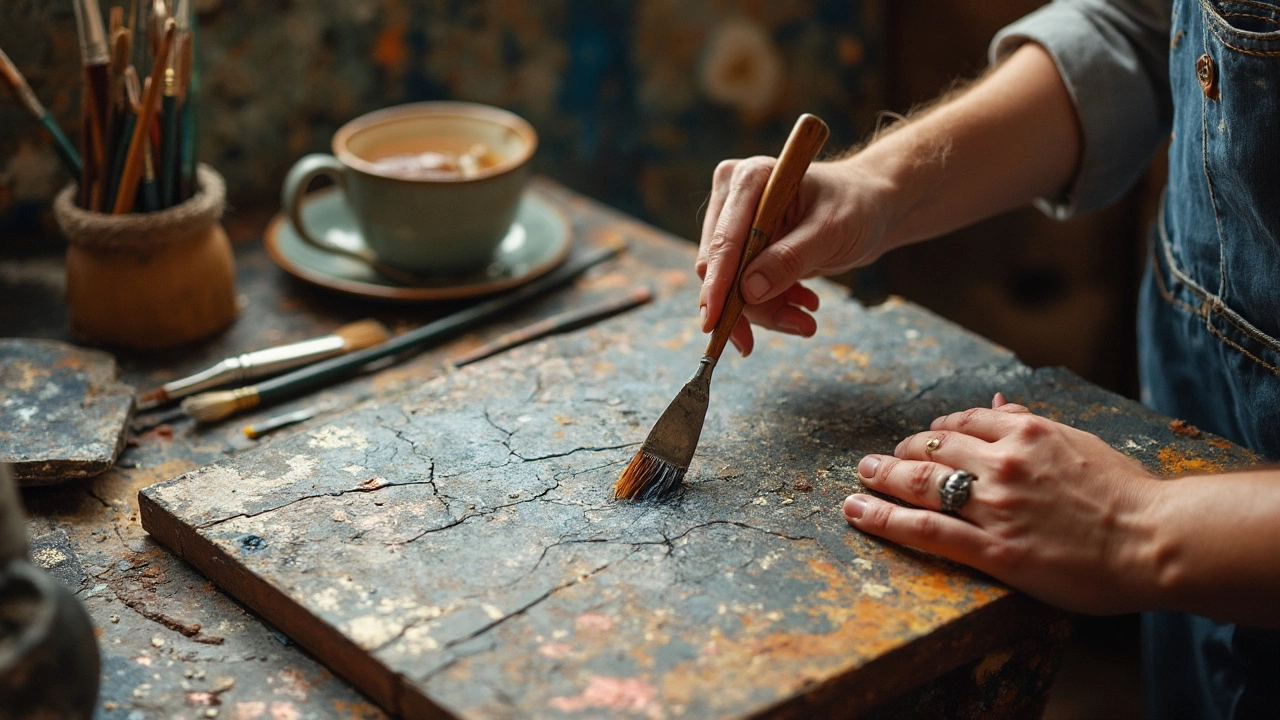Paint Removal: Techniques, Tools & Tips for Art Restoration and DIY Projects
When working with Paint Removal, the process of stripping paint from a surface, whether a canvas, wall, or historic panel. Also known as paint stripping, it is a critical step in art restoration, where conservators aim to preserve original layers while eliminating later additions. Paint removal encompasses solvent techniques, mechanical scraping, and emerging laser methods, each chosen based on material, condition, and desired outcome. Effective paint removal requires a blend of science and craftsmanship, because the wrong approach can damage underlying pigments or weaken the substrate.
Choosing the Right Method and Tool
The most common approach in both professional studios and home workshops involves solvent, a chemical agent that softens or dissolves paint for easy removal. Solvents range from mild citrus‑based cleaners to stronger alcohol or acetone blends, and each interacts differently with oil, acrylic, or lacquer layers. Selecting a solvent means balancing effectiveness with safety; strong chemicals can harm the artwork’s original paint or pose health risks to the user.
When a solvent alone isn’t enough, a scraper tool, a handheld instrument—often stainless steel or plastic—that gently lifts softened paint becomes essential. Scrapers come in various shapes: flat for broad surfaces, angled for corners, and flexible blades for delicate edges. Using the right scraper reduces the chance of gouging the substrate and helps maintain a clean, even finish. In many cases, paint removal requires the right scraper tool to separate layers without tearing the canvas or wood.
Beyond chemicals and manual tools, newer technologies like laser ablation are gaining traction in high‑value conservation. Lasers can vaporize thin paint films without touching the surface, offering unparalleled precision for priceless works. However, the equipment is costly and demands specialized training, so it remains a niche option for museums and major restoration labs.
Regardless of method, every paint removal project must consider conservation, the broader discipline of preserving cultural heritage through careful treatment and documentation. Conservation guidelines dictate that any removal process be reversible, well‑documented, and tested on a small area first. Documentation includes photos, solvent tests, and notes on brush or scraper pressure, ensuring future conservators understand what was done.
Safety and environmental impact are also part of the conversation. Proper ventilation, protective gloves, and eye gear are non‑negotiable when handling strong solvents. Many professionals now prefer low‑VOC (volatile organic compound) products or biodegradable options to reduce hazardous waste. These choices protect both the conservator’s health and the surrounding ecosystem.
By now you’ve seen how paint removal ties together chemistry, tool selection, and ethical stewardship. Below you’ll find a curated collection of articles that dive deeper into each of these angles—whether you’re a beginner looking for DIY tips, a conservator needing advanced solvent data, or an artist curious about how paint removal shapes modern practice. Explore the posts to expand your knowledge, pick up practical tricks, and see real‑world examples of successful paint removal in action.

Professionals in the oil painting world use specific tools and tricks when it comes to stripping old paint. This article breaks down what those tools are, how they actually work, and why some methods are better for certain surfaces. If you've ever wondered what makes a pro's work smoother or how to avoid trashing your canvas or wooden panel, this is where you'll find honest advice. Expect tips, real-life experiences, and a few smart shortcuts that painters swear by.





